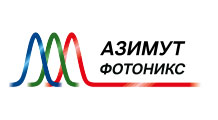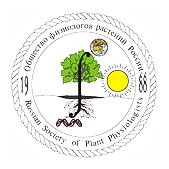Current Challenges in Photosynthesis: from Natural to Artificial (E-book)

Harvey J. M. Hou, Suleyman I. Allakhverdiev, Govindjee, Mohammad Mahdi Najafpour
Jules Verne (1828-1905), author of Around the World in Eighty Days (1873) and Journey to the Center of the Earth (1864), wrote in 1875
“I believe that water will one day be used as a fuel, because the hydrogen and oxygen which constitute it, used separately or together, will furnish an inexhaustible source of heat and light. I therefore believe that, when coal (oil) deposits are oxidised, we will heat ourselves by means of water. Water is the fuel of the future”
Solar energy is the only renewable energy source that has sufficient capacity for the global energy need; it is the only one that can address the issues of energy crisis and global climate change. A vast amount of solar energy is harvested and stored via photosynthesis in plants, algae, and cyanobacteria since over 3
billion years. Today, it is estimated that photosynthesis produces more than 100 billion tons of dry biomass annually, which would be equivalent to a hundred times the weight of the total human population on our planet at the present time, and equal to a global energy storage rate of about 100 TW.
The solar power is the most abundant source of renewable energy, and oxygenic photosynthesis uses this energy to power the planet using the amazing reaction of water splitting. During water splitting, driven ultimately by sunlight, oxygen is released into the atmosphere, and this, along with food production by photosynthesis, supports life on ourearth. The other product of water oxidation is “hydrogen” (proton and electron). This ‘hydrogen’ is not normally released into the atmosphere as hydrogen gas but combined with carbon dioxide to make high energy containing organic molecules. When we burn fuels we combine these organic molecules with oxygen. The design of new solar energy systems must adhere to the same principle as that of natural photosynthesis. For us to manipulate it to our benefit, it is imperative that we completely understand the basic processes of natural photosynthesis, and chemical conversion, such as light harvesting, excitation energy transfer, electron transfer, ion transport, and carbon fixation. Equally important, we must exploit application of this knowledge to the development of fully synthetic and/or hybrid devices. Understanding of photosynthetic reactions is not only a satisfying intellectual pursuit, but it is important for improving agricultural yields and for developing new solar technologies. Today, we have considerable knowledge of the working of photosynthesis and its photosystems, including the water oxidation reaction. Recent advances towards the understanding of the structure and the mechanism of the natural photosynthetic systems are being made at the molecular level. To mimic natural photosynthesis, inorganic chemists, organic chemists, electrochemists, material scientists, biochemists, biophysicists, and plant biologists must work together and only then significant progress in harnessing energy via “artificial photosynthesis” will be possible.
This Research Topic provides recent advances of our understanding of photosynthesis, gives to our readers recent information on photosynthesis research, and summarizes the characteristics of the natural system from the standpoint of what we could learn from it to produce an efficient artificial system, i.e., from the natural to the artificial. This topic is intended to include exciting breakthroughs, possible limitations, and open questions in the frontiers in photosynthesis research.
Книгу можно скачать бесплатно по ссылке http://www.frontiersin.
Новости
Новости науки и практики // Апрель 2024
Обзор научных новостей, опубликованных во всемирной паутине за последний месяцФосфорилирование плазматической мембраны H+-АТФазы Thr881 (треонин) участвует в светоиндуцированном открывании устьиц
Ученые из Университета Нагои (Nagoya University) и Института трансформирующих биомолекул (WPI-ITbM) обнаружили новый ...Научная конференция «Photosynthesis and Hydrogen Energy Research for Sustainability – 2024»
Приглашаем Вас принять участие в XII международной научной конференции


Объявления
Записей не найдено.



